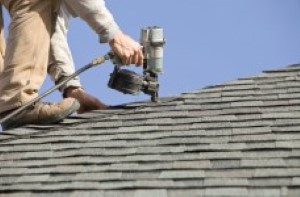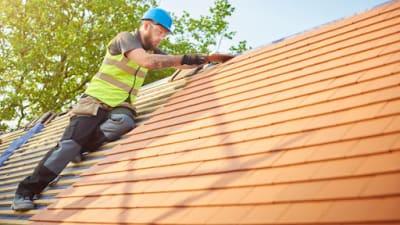Understanding the Different Sorts Of Roof Coverings: A Comprehensive Guide for Homeowners
In the world of homeownership, picking the appropriate roofing style is a decision that brings considerable implications for both capability and visual appeal. With a variety of options-- varying from the typical gable to the contemporary flat-- each kind provides one-of-a-kind benefits and difficulties that need to align with the home owner's specific requirements and ecological factors to consider. Understanding these differences not just help in making an informed choice but also affects long-lasting maintenance and power efficiency. As we explore the intricacies of various roofing system types, it comes to be obvious that one size does not fit all; the appropriate selection may shock you.
Gable Roofs
Gable roofing systems, defined by their triangular form, are amongst the most preferred roof covering styles as a result of their simpleness and effectiveness in losing water and snow. This style includes 2 sloping sides that satisfy at a ridge, permitting reliable drain and lessening the risk of water accumulation. The steep pitch generally related to gable roofings improves their capability to deal with hefty rainfall, making them appropriate for various climates.
In addition to their functional advantages, gable roofs use visual convenience. They can be adapted to various building styles, from traditional to modern-day homes. The style can likewise suit added functions such as dormer home windows, which improve natural light and ventilation in the attic room room.
In addition, saddleback roofs give sufficient area for insulation, contributing to energy efficiency. Home owners can pick from a selection of roof covering materials, consisting of asphalt roof shingles, steel, and ceramic tiles, additionally boosting customization options.
In spite of their advantages, saddleback roofs may need extra assistance in areas prone to high winds or hefty snowfall. In general, the gable roof continues to be a favored option because of its blend of functionality, sturdiness, and aesthetic charm.
Flat Roofs
Level roofings are commonly recognized for their minimal style and practical applications, particularly in commercial and commercial settings (oahu roofing). These roofing systems feature a almost straight or straight surface area, which enables very easy building and construction and flexible area application. While they may do not have the visual appeal of angled roofs, flat roofing systems supply various benefits, especially in city atmospheres where making best use of area is critical
One of the main advantages of flat roofing systems is their availability. House owners can utilize the roof covering area for various objectives, such as rooftop yards, terraces, or photovoltaic panel setups. Furthermore, level roofing systems are commonly a lot more cost-effective to maintain and mount compared to their sloped equivalents, as they call for fewer materials and labor.
However, flat roofings do present specific challenges. Correct drainage is necessary to protect against water pooling, which can lead to leaks and architectural damages. Therefore, picking top notch waterproofing materials and regular inspections are crucial for ensuring long life. Usual products used for flat roof coverings include built-up roof (BUR), modified asphalt, and single-ply membranes, each offering distinctive benefits. Generally, level roofings act as a practical and adaptable selection for several property owners and companies alike.
Hip Roofing Systems
Hip roofing systems are identified by their sloped sides that merge on top, forming a ridge. This style is unique from gable roof coverings, as all 4 sides of a hip roofing system slope downwards toward the walls, providing an extra secure framework. The angle of the inclines can vary, permitting convenience in find out architectural aesthetic appeals and performance.
One of the primary benefits of hip roof coverings is their capacity to endure heavy winds and unfavorable weather. The sloped surfaces make it possible for much better water drainage, reducing the danger of leakages and water damage. Furthermore, hip roofs use increased attic room space, which can be utilized for storage and even converted right into habitable areas.
However, building a hip roofing system can be more pricey and intricate than less complex roof covering types, such as gable roofing systems. The additional product and labor associated with creating the slopes and guaranteeing correct structural honesty can bring about higher expenses. Regardless of these downsides, many homeowners favor hip roof coverings for their sturdiness, visual allure, and capacity for energy efficiency.
Mansard Roof Coverings
Mansard roofings, typically recognized by their distinct four-sided layout, function 2 slopes on each side, with the lower incline being steeper than the top. This architectural style, originating from France in the 17th century, is not just cosmetically attractive but useful, as it maximizes the useful room in the upper floorings of a structure. The high reduced incline permits even more clearance, making it an optimal option for attics or lofts, which can be transformed right into living spaces.
Mansard roofings are defined by their adaptability, fitting different architectural designs, from typical to modern-day. They can be built with different materials, including asphalt roof shingles, slate, or steel, providing homeowners with a range of options to suit their budget plans and choices. In addition, the layout permits for the assimilation of dormer home windows, improving all-natural light and air flow in the top degrees.
Nonetheless, it is necessary to take into consideration the potential disadvantages. Mansard roofs may need more maintenance because of the complexity of their design, and their steep inclines can be challenging for snow and rain overflow. On the whole, mansard roof coverings incorporate beauty with usefulness, making them a prominent i was reading this selection among property owners looking for distinctive architectural features.
Lost Roofs
As house owners increasingly look for simplicity and functionality in their building designs, shed roofings have actually become a preferred option. Defined by a solitary sloping plane, a shed roof offers a minimalist aesthetic that enhances numerous home styles, from contemporary to rustic.
One of the key advantages of a shed roof covering is its uncomplicated construction, which frequently translates to decrease labor and product costs. This style enables efficient water drainage, reducing the risk of leaks and water damages. Furthermore, the upright incline gives adequate area for skylights, enhancing natural light within the inside.
Dropped roof coverings also offer adaptability in regards to usage. They can be efficiently incorporated into additions, garages, or outdoor structures like structures and sheds. Furthermore, this roof design can accommodate different roof covering materials, consisting of steel, asphalt roof shingles, and even eco-friendly roofing systems, lining up with environmentally friendly initiatives.
Nevertheless, it is vital to consider regional environment conditions, as hefty snow tons may demand modifications to the roofing's angle or structure. On the whole, lost roofing systems offer a sensible and visually pleasing alternative for house owners aiming to maximize performance without endangering style.
Final Thought


Gable roofs, characterized by their triangular shape, are among the most popular roof designs due to their simpleness and effectiveness in losing water and snow. oahu roofing. The steep pitch frequently associated with gable roofing systems enhances their capacity to manage heavy rainfall, making them appropriate for numerous environments
While they might do not have the aesthetic charm of pitched roofing systems, level roofs use countless benefits, particularly in urban settings where optimizing room is critical.
